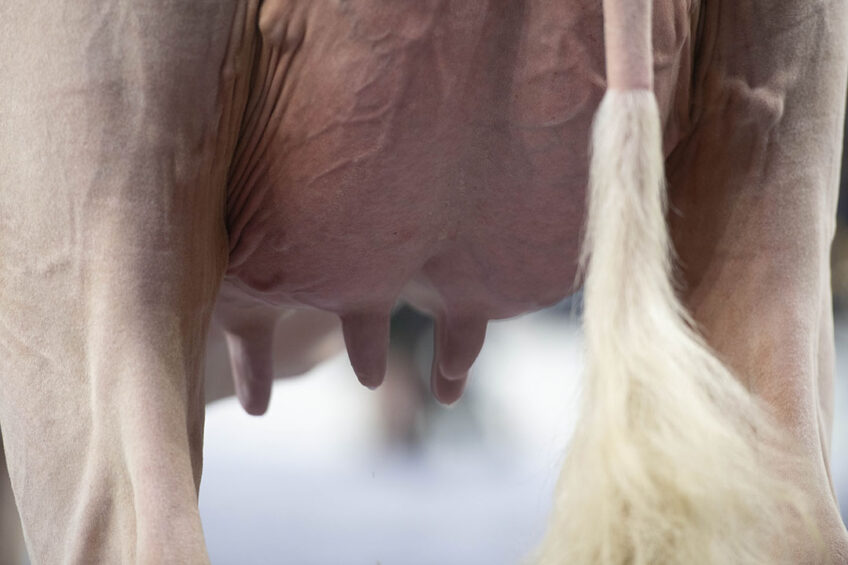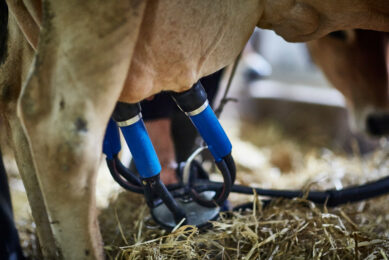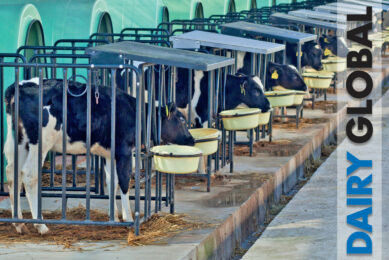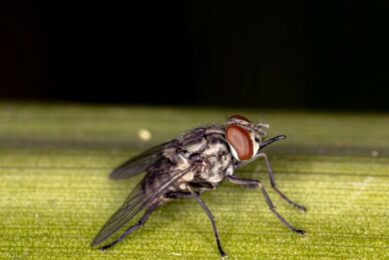7 tips to reducing mastitis during the dry period

How to approach mastitis control? A recent Agriculture and Horticulture Development Board (AHDB) webinar shed some light on reducing mastitis during the dry period particularly.
During the webinar James Breen from the University of Nottingham highlighted some tips on how to deal with mastitis – from somatic cell count (SCC) monitoring to the source of the mastitis infection. He pointed out that going from a one-size-fits-all approach to a herd-specific strategy is much more beneficial to farmers. Here are 7 points he emphasised:

 Increase your certainty about whether a cow could have an infection and ensure that you check your data – around drying off particularly. Breen suggests looking at the last 3 recordings. If these recordings all indicate an SCC of below the threshold of 200,000 cells/ml, farmers can be more than 90% certain that it is highly unlikely that the cow is infected with a major pathogen.
Increase your certainty about whether a cow could have an infection and ensure that you check your data – around drying off particularly. Breen suggests looking at the last 3 recordings. If these recordings all indicate an SCC of below the threshold of 200,000 cells/ml, farmers can be more than 90% certain that it is highly unlikely that the cow is infected with a major pathogen. Aim to slow down the numbers of newly infected cows. This will mean fewer chronic cows. It is therefore imperative to monitor SCC changes across the dry period.
Aim to slow down the numbers of newly infected cows. This will mean fewer chronic cows. It is therefore imperative to monitor SCC changes across the dry period.
 When it comes to monthly lists of high SCC cows, farmers need to step back and uncover where the infections started. The number of cows that end up on the list should be managed. Breen placed emphasis on moving away from monthly management lists for high SCC cows – as it isn’t a long-term management approach. He said that we manage cell counts by limiting the number of cows that end up on these lists in the first place.
When it comes to monthly lists of high SCC cows, farmers need to step back and uncover where the infections started. The number of cows that end up on the list should be managed. Breen placed emphasis on moving away from monthly management lists for high SCC cows – as it isn’t a long-term management approach. He said that we manage cell counts by limiting the number of cows that end up on these lists in the first place.
 Keep on monitoring the situation and understand how to control it. Keep focus on pattern analysis. Think about what the pattern is in the herd:
Keep on monitoring the situation and understand how to control it. Keep focus on pattern analysis. Think about what the pattern is in the herd:
- Is it a pattern of contagious mastitis?
- Environmental patterns?
- Are they dry period infections?
But the main focus should be where the new infections are and where they come from. Breen stresses that the question that arises in the event of mastitis infection should be less about how to treat it and more about what the infection rate has been over the last weeks. This is an important factor in establishing the new infections in order to slow down spread and have fewer chronic cases.
So it is important to uncover the source.
- How many other cows have been infected in the last three months?
- At what point did they move above 200,000 cells/ml?
- Is there a seasonal pattern – does it always happen at this time of year?
- Most importantly, how can we slow it down?
This is a more sustainable approach.
 Regarding high cell count cows and dry therapy, he added that a high cell count cow at drying off is very likely to cure with antibiotic dry cow therapy in combination with internal teat sealant – this significantly improves the chance of ”calving that cow in” uninfected. For those not using antibiotics or back on the use of antibiotics, there are alternatives.
Regarding high cell count cows and dry therapy, he added that a high cell count cow at drying off is very likely to cure with antibiotic dry cow therapy in combination with internal teat sealant – this significantly improves the chance of ”calving that cow in” uninfected. For those not using antibiotics or back on the use of antibiotics, there are alternatives. Dry cows can in general be very well managed on deep sand cubicles. However, they need to be managed the same as the milking cows. For example, straw and paper should be bedded daily; with deep sand, every other day will work or even once or twice a week, depending on the herd. It’s all about fresh, dry, clean bedding on a regular basis.
Dry cows can in general be very well managed on deep sand cubicles. However, they need to be managed the same as the milking cows. For example, straw and paper should be bedded daily; with deep sand, every other day will work or even once or twice a week, depending on the herd. It’s all about fresh, dry, clean bedding on a regular basis.
 At drying off, it is advised that with all cows an internal teat sealant is used. Hygiene is of utmost importance – being ”surgically clean” is advised when carrying out any dry cow therapy – whether antibiotic or internal teat sealant.
At drying off, it is advised that with all cows an internal teat sealant is used. Hygiene is of utmost importance – being ”surgically clean” is advised when carrying out any dry cow therapy – whether antibiotic or internal teat sealant.
Join 13,000+ subscribers
Subscribe to our newsletter to stay updated about all the need-to-know content in the dairy sector, two times a week.










